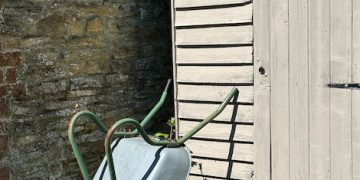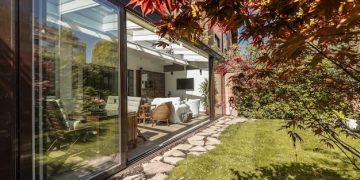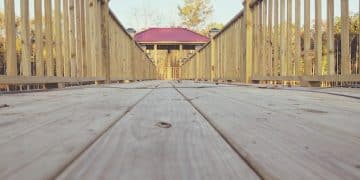Build a Conservatory: Add Light and Space to Your Home
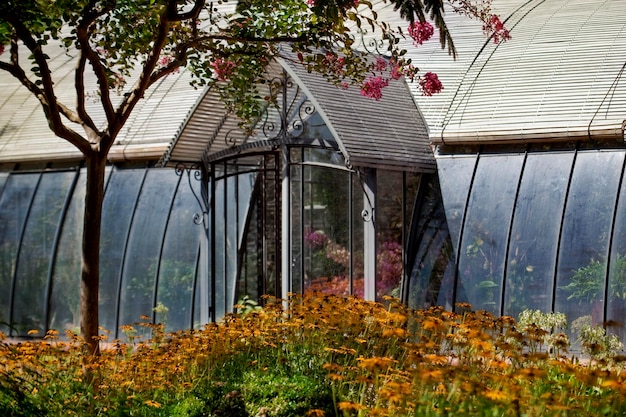
Anúncios
Building a conservatory is a fantastic way to extend your home, creating a bright and airy living space that connects seamlessly with your garden, adding value and improving your lifestyle.
Looking to expand your living space and bathe your home in natural light? Perhaps it is time to consider a conservatory. Adding a build a conservatory: add a bright and airy living space to your home option is not only a rewarding project but can also increase the value of your property. Let’s explore the process, benefits, and considerations involved in constructing your dream conservatory.
Anúncios
Planning your conservatory build
Before diving into the construction phase, meticulous planning is essential for a successful conservatory build. Consider the purpose of your new space, its location, and the design that best complements your home.
Defining the purpose of your conservatory
What will your conservatory be used for? A dining area, a relaxation zone, or a home office? Understanding its primary function will guide your design choices.
Anúncios
Choosing the right location
The direction your conservatory faces can significantly affect its temperature and light levels. South-facing conservatories receive ample sunlight, while north-facing ones offer a more consistent, cooler ambiance.
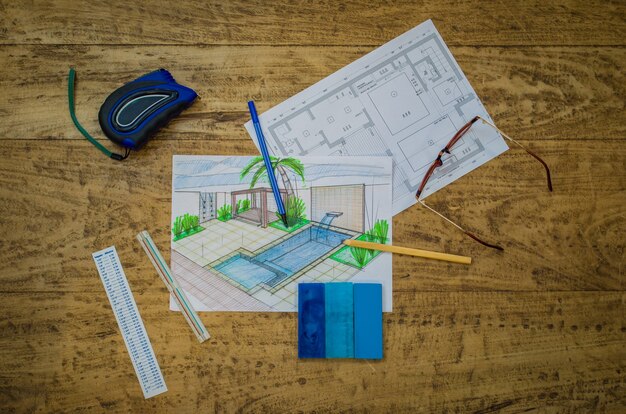
Design and style considerations
Select a style that complements your home’s architecture. Victorian, Edwardian, lean-to, and gable-end are popular options, each offering a unique aesthetic.
- Victorian: Characterised by its ornate design and curved bays.
- Edwardian: Features a more square or rectangular shape, offering a classic look.
- Lean-to: A simple, cost-effective design that slopes away from the house.
- Gable-end: Boasts a high, triangular roof that maximizes light and space.
Careful planning ensures your conservatory meets your needs and enhances your home’s appeal. Considering these initial steps will prevent potential issues down the line.
Understanding planning permission and building regulations
Navigating the legal aspects of building a conservatory can seem daunting. However, understanding planning permission and building regulations is crucial to avoid future complications.
When is planning permission required?
In many cases, conservatories are considered permitted developments and don’t require full planning permission. However, this depends on factors such as size, location, and proximity to boundaries.
Key factors determining planning permission
Conservatories typically don’t need planning permission if they meet certain criteria, such as not exceeding a specific height or covering more than half the area of land around the original house.
Building regulations: What you need to know
Building regulations ensure your conservatory is structurally sound, energy-efficient, and safe. Compliance is necessary for aspects like insulation, ventilation, and fire safety.
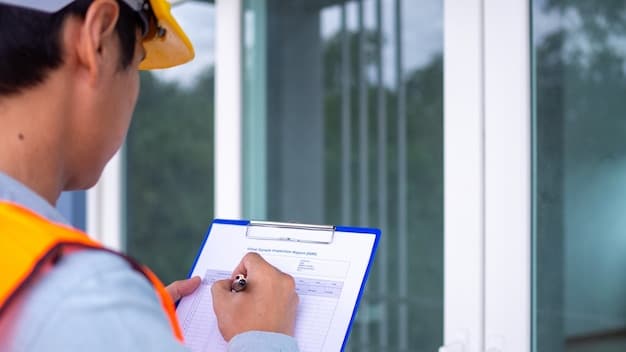
Ensuring compliance with regulations
Work closely with your builder to ensure all aspects of the construction meet the required standards. This might involve inspections at various stages of the build.
Understanding and adhering to planning permission and building regulations is vital for a smooth and legal conservatory build. Failing to comply can lead to costly rectifications or even demolition.
Choosing the right materials for your conservatory
Selecting the right materials is paramount in creating a durable, aesthetically pleasing, and energy-efficient conservatory. The choice impacts both the appearance and the functionality of your new space.
Frames: UPVC, aluminium, or wood?
The frame material influences the conservatory’s insulation, maintenance requirements, and overall look. Each option has its pros and cons.
Glazing options: Glass vs polycarbonate
The type of glazing affects thermal efficiency, light transmittance, and noise reduction. Consider the benefits of glass and polycarbonate based on your specific needs.
Comparing material costs and benefits
UPVC is cost-effective and low-maintenance, while aluminium offers strength and a sleek appearance. Wood provides a traditional, natural aesthetic but requires regular upkeep.
- UPVC: Affordable, energy-efficient, and easy to maintain.
- Aluminium: Strong, durable, and resistant to corrosion.
- Wood: Aesthetically pleasing with natural insulation properties.
Selecting the appropriate materials is crucial for ensuring a conservatory that stands the test of time while meeting your aesthetic and functional requirements. Researching and carefully weighing the options will pay dividends in the long run.
Working with professionals vs DIY
Deciding whether to hire professionals or tackle the conservatory build as a DIY project is a significant decision. Consider your skills, time availability, and the complexity of the project.
Assessing your DIY skills and time
Are you comfortable with tasks like bricklaying, roofing, and glazing? Do you have the time to dedicate to a lengthy construction project?
Benefits of hiring professionals
Professionals bring expertise, ensuring the build complies with regulations and is completed efficiently. They also provide warranties and insurance coverage.
Finding the right contractors
Obtain multiple quotes, check references, and review previous work. A reputable contractor will offer transparent pricing and a detailed project plan.
Consider these points before embarking on your conservatory project:
- Expertise: Professionals have years of experience and can handle unexpected challenges.
- Time-saving: Hiring contractors saves time and reduces the risk of delays.
- Quality assurance: Professionals ensure the build meets high standards and complies with regulations.
Weighing the pros and cons of professional help versus DIY is essential. While DIY can save money, professional expertise ensures a quality build and a stress-free experience.
Cost considerations and budgeting
Understanding the costs associated with building a conservatory is vital for effective budgeting. Accurately estimating expenses helps avoid financial surprises and ensures the project stays on track.
Estimating the total cost
The total cost includes materials, labour, planning permission fees (if applicable), and additional expenses like electrical work or plumbing.
Budgeting for unexpected expenses
It’s wise to allocate a contingency fund for unforeseen issues, such as weather delays or unexpected structural repairs.
Financing options for your conservatory
Explore financing options like home improvement loans, credit cards, or savings. Compare interest rates and repayment terms to find the best fit.
- Home improvement loans: Secured loans with competitive interest rates.
- Credit cards: Convenient for smaller expenses but often have higher interest rates.
- Savings: The most cost-effective option, avoiding additional interest charges.
Careful cost planning is crucial for a financially sound conservatory build. Detailed budgeting ensures you can create your dream space without overspending.
Decorating and furnishing your conservatory
Once the construction is complete, the fun part begins: decorating and furnishing your conservatory to create a welcoming and stylish space. Consider furniture choices, lighting, and climate control.
Choosing the right furniture
Opt for weather-resistant furniture designed for conservatories. Rattan, wicker, and durable outdoor fabrics are excellent choices.
Lighting and climate control
Install blinds or shades to control sunlight and temperature. Consider underfloor heating or air conditioning for year-round comfort.
Adding personal touches
Incorporate personal elements like plants, artwork, and decorative accessories to make the space your own.
Here are some ideas to get you started:
- Plants: Add greenery to create a relaxing, natural ambiance.
- Rugs: Define different areas and add warmth underfoot.
- Cushions: Use colorful cushions to enhance comfort and style.
Thoughtful decoration and furnishing transform a conservatory into a cherished living space. Paying attention to detail creates an inviting environment for relaxation and enjoyment.
| Key Aspect | Brief Description |
|---|---|
| 🔨 Planning Permissions | Check local regulations to ensure compliance. |
| 💰 Budgeting | Accurately estimate costs and prepare for contingencies. |
| 🛠️ DIY vs Professional | Assess skills and time to decide on professional help. |
| 🛋️ Decorating | Choose weather-resistant furniture and climate control solutions. |
FAQ
▼
Not always. Many conservatories fall under permitted development rights, but this depends on size, location, and other factors. It’s essential to check local regulations to be sure.
▼
UPVC frames are cost-effective, require minimal maintenance, and offer good insulation. They are also resistant to rot and pests, making them a durable choice for your conservatory.
▼
Use window blinds, reflective glass, and ventilation to manage heat. Air conditioning or ceiling fans can provide additional cooling. Also, consider the conservatory’s orientation to minimize direct sunlight.
▼
Hiring professionals ensures expertise and compliance with regulations. DIY can save money but requires significant skills and time. Assess your abilities and the project’s complexity to decide.
▼
Weather-resistant furniture like rattan, wicker, or metal frames with outdoor fabrics is ideal. These materials withstand temperature fluctuations and direct sunlight, ensuring longevity and comfort.
Conclusion
Building a conservatory is a worthwhile investment that brings light, space, and value to your home. By carefully planning, understanding regulations, and choosing the right materials and professionals, you can create a beautiful and functional extension that you’ll enjoy for years to come.
